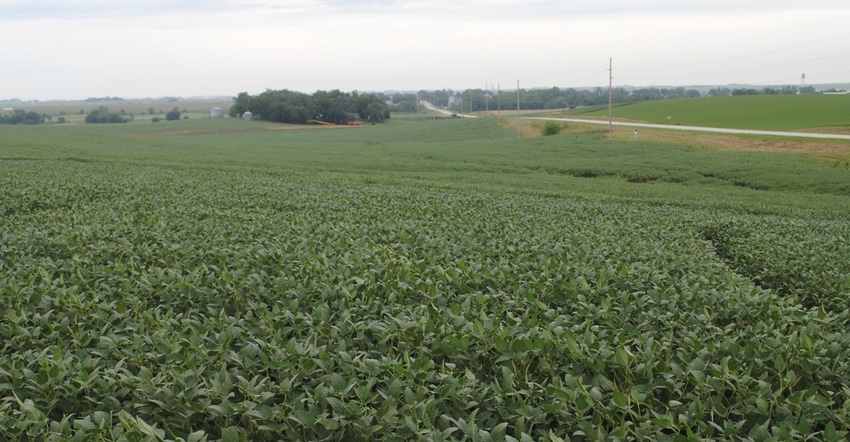April 8, 2021

Planting will be here before we know it. Management decisions can be made now to reduce losses caused by some important diseases. The most damaging pathogen of soybeans is soybean cyst nematode.
If you have confirmed SCN on your farm, it’s important to actively manage them to reduce population densities and keep them low to minimize the damage they can cause.
Management of SCN can be easy and may not require additional input costs. In fact, the first management recommendation is to rotate the infested fields with a nonhost crop — most Nebraska producers are doing this already by rotating soybeans with corn.
For the first one to two years of corn production, SCN population densities are expected to decline 50% to 75% each year. Growing continuous corn for additional years still helps reduce SCN, but the rate of reduction is expected to decline, and population densities will never reach zero SCN eggs.
Other nonhost crops, such as small grains and alfalfa, also are good nonhost crop rotation options to help reduce SCN populations.
Rotate resistance sources
In addition to growing corn or other nonhost crops, it’s very important to carefully select soybean varieties that have SCN resistance and rotate the sources of resistance that are used year-to-year.
Unfortunately, we have historically had limited choices for SCN resistance. More than 95% of SCN-resistant varieties were derived from a single source of resistance — PI 88788. In Nebraska, almost 50% of SCN populations are able to reproduce on PI 88788.
In some other states, up to 100% of their SCN populations can reproduce on PI 88788. When selecting your resistant varieties, try to identify ones with SCN resistance that come from other sources, such as Peking, which is becoming increasingly common in commercially available varieties.
The good news is we now have another source of resistance — PI 89772 —which is available this year in two new varieties from Syngenta brands, Golden Harvest and NK.
These varieties are in maturity group 2.3. Sometimes you may find it difficult to locate a resistant soybean variety in your desired maturity group with a different source of resistance (other than the common PI 88788).
In that case, you should at least select soybean varieties with a high level of PI 88788 resistance and switch varieties. That information is available in ratings printed in seed company catalogs, or contact your seed company representatives for more information.
Seed treatments
In addition to selecting the best SCN-resistant variety for your farm and rotation, several seed treatment nematicide products are now available. These products may provide some additional protection and can increase yield 1 to 5 bushels per acre, based on the results from Iowa State University.
Seed treatments are not a substitute for the use of effective SCN-resistant varieties whose yield can vary by 10 or more bushels per acre in fields with SCN infestations.
Remember, weed management can be important as there are several common winter annual weeds that are hosts for SCN and can allow them to infect and reproduce to higher population densities, even when there’s no crop in the field.
Winter annuals henbit and purple deadnettle are strong hosts for SCN. Field pennycress, shepherd’s purse, small-flowered bittercress and common chickweed can also be hosts for SCN.
In 2020, the University of Nebraska-Lincoln Plant & Pest Diagnostic Clinic processed 459 samples from 37 counties across Nebraska as a part of an annual survey funded by the Nebraska Soybean Board — 32% of these samples were positive for SCN, and 12% of samples had populations over 500 eggs per 100 cubic centimeters of soil (about 3 ounces).
If you don’t know or haven’t tested fields recently to check SCN numbers, you can collect a sample any time of the year, in any crop field, as long as you can get a soil probe into the ground.
Submit a soil sample for SCN analysis to the UNL Plant and Pest Diagnostic Clinic at no charge thanks to support from the Nebraska Soybean Board. Contact your local Nebraska Extension educator for more information.
Broderick is a Nebraska Extension educator and coordinator of the UNL Plant and Pest Diagnostic Clinic. Jackson-Ziems is a Nebraska Extension plant pathologist. Bartels is a Nebraska Extension educator.
Source: UNL CropWatch, which is solely responsible for the information provided and is wholly owned by the source. Informa Business Media and all its subsidiaries are not responsible for any of the content contained in this information asset.
You May Also Like




